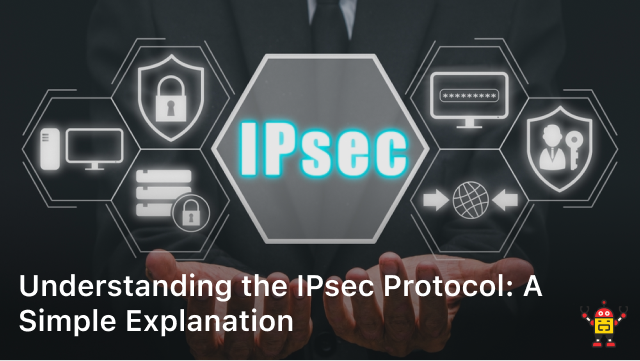As an IT professional, you need to have a firm grasp of network security protocols and standards. One of the most important to understand is the IPsec protocol. IPsec, which stands for Internet Protocol Security, is a framework for securing communications over IP networks. It encrypts and authenticates all IP packets in a data stream. IPsec allows you to implement secure virtual private networks and secure remote access. It is a robust, mature standard that is supported by all major operating systems and network devices.
While the details of how IPsec works can be quite technical, it is important to have a basic understanding of what it does, how it functions, and its key components. This article provides an high-level overview of the IPsec protocol in simple terms. You will learn about the two main modes IPsec operates in, the types of encryption it uses, how it authenticates and protects IP packets, and more. Gaining this foundational knowledge about IPsec will allow you to better understand how to implement and manage it on your networks.
What Is the IPsec Protocol?

The IPsec protocol suite provides security for Internet Protocol (IP) communications. It authenticates and encrypts each IP data packet in a communication session. IPsec is most commonly used in virtual private networks (VPNs) to allow remote users to securely access a private network.
IPsec provides two main types of security services: authentication and encryption. Authentication ensures that the data is from a trusted source, while encryption hides the contents of the data. IPsec uses cryptographic techniques to provide these services.
There are two main components in the IPsec protocol suite:
- The Internet Key Exchange (IKE) protocol is used to exchange keys and set up security associations (SAs). The SAs contain the details of authentication and encryption methods.
- The Authentication Header (AH) and Encapsulating Security Payload (ESP) provide authentication and encryption of IP data packets. AH authenticates the entire IP data packet, while ESP can authenticate and encrypt the data.
IPsec operates at the network layer (layer 3) of the Open Systems Interconnection (OSI) model. This means that it can protect any protocol above it (e.g. TCP, UDP). IPsec is implemented as a modification to IP, so the IP data packets have IPsec headers added to them.
Using the IPsec protocol suite allows you to implement secure communication over an unsecure network like the public Internet. By providing authentication and encryption, IPsec helps ensure the confidentiality, integrity, and authenticity of IP data packets.
How Does IPsec Work?
To understand how IPsec works, you first need to know that it operates at the network layer (Layer 3) of the OSI model. IPsec provides security for communications over IP networks through encryption and authentication of the IP packets.
Encryption
IPsec uses encryption algorithms like AES and 3DES to encrypt the data in IP packets. This converts the data into unreadable cipher text that hides the meaning of the communication. Only authorized recipients with the correct decryption key can decrypt the cipher text back into readable data.
Authentication
IPsec also uses authentication mechanisms like SHA-1 and MD5 to verify the identity of the sender and ensure the integrity of the data. This prevents man-in-the-middle attacks by confirming that the packets are from the expected sender and have not been altered in transit. Digital signatures and hash functions are used to authenticate packets.
Key exchange
For any encryption and authentication to work, secret keys must be exchanged between the sender and receiver. IPsec uses protocols like Internet Key Exchange (IKE) to do this securely. IKE establishes a shared security association (SA) that defines the keys and algorithms to use.
Protocols
IPsec uses two main protocols – Authentication Header (AH) and Encapsulating Security Payload (ESP). AH provides authentication, while ESP provides both authentication and encryption. These protocols insert the authentication and cryptography information into the IP packets, allowing secure end-to-end communication over IP networks.
With encryption, authentication, key exchange, and the AH and ESP protocols, IPsec is able to provide confidentiality, integrity, and authentication for communications over IP networks. By securing communications at the network layer, IPsec protects all applications and services running over the IP network.
The Benefits and Drawbacks of Using IPsec
The IPsec protocol offers both benefits and drawbacks to keep in mind when determining if it’s the right solution for your networking needs.
Benefits
IPsec provides strong encryption and authentication for your IP traffic, securing communications over less trusted networks. By using encryption algorithms and keys, IPsec helps ensure that only authorized users can access the network and that the data cannot be read by unauthorized parties. IPsec also provides data integrity checks to verify that the data has not been altered in transit.
Another benefit of IPsec is that it operates at the network layer (Layer 3) of the OSI model, so it is transparent to applications and users. This means you do not have to configure each application separately to use the protocol. IPsec can help simplify the process of securing your network communications.
Drawbacks
A major downside of IPsec is its complexity. Configuring IPsec requires specialized technical knowledge that can be difficult to implement and maintain. IPsec also requires manual configuration of security associations between devices, which can be tedious to set up for large networks.
IPsec only provides security for IP-based traffic. It does not encrypt non-IP traffic like IPX, NetBEUI or AppleTalk. IPsec also does not provide end-to-end security for communications that traverse the Internet. It only provides security between gateways that implement the protocol.
For some organizations, the benefits of a strong, standardized encryption and authentication protocol like IPsec outweigh the potential costs and complexities. However, IPsec may not be suitable or practical for all networking environments. Carefully evaluating both the advantages and disadvantages can help determine if IPsec is the right solution for your needs.
Conclusion
As you have learned, the IPsec protocol suite provides encryption and authentication for IP packets at the network layer. By implementing IPsec, you can secure your network traffic and protect your data. While the concepts discussed here only scratch the surface, you now have a basic understanding of how IPsec works and its major components like the AH and ESP protocols. With this foundation, you can explore IPsec in more depth and determine how to best deploy it in your own network environment. The world of network security can seem complex, but by breaking it down into fundamentals like IPsec you can gain valuable knowledge and insights. Keep learning, keep exploring, and keep your network traffic secure.






